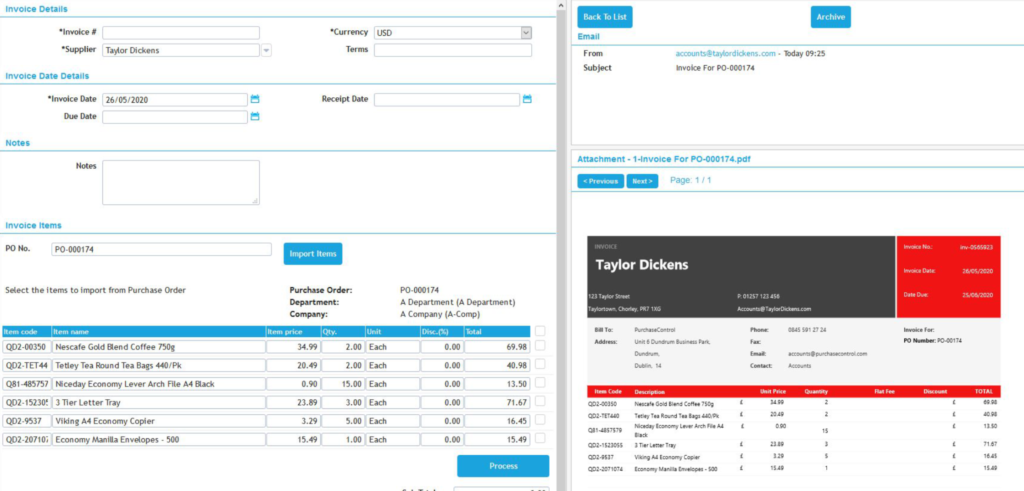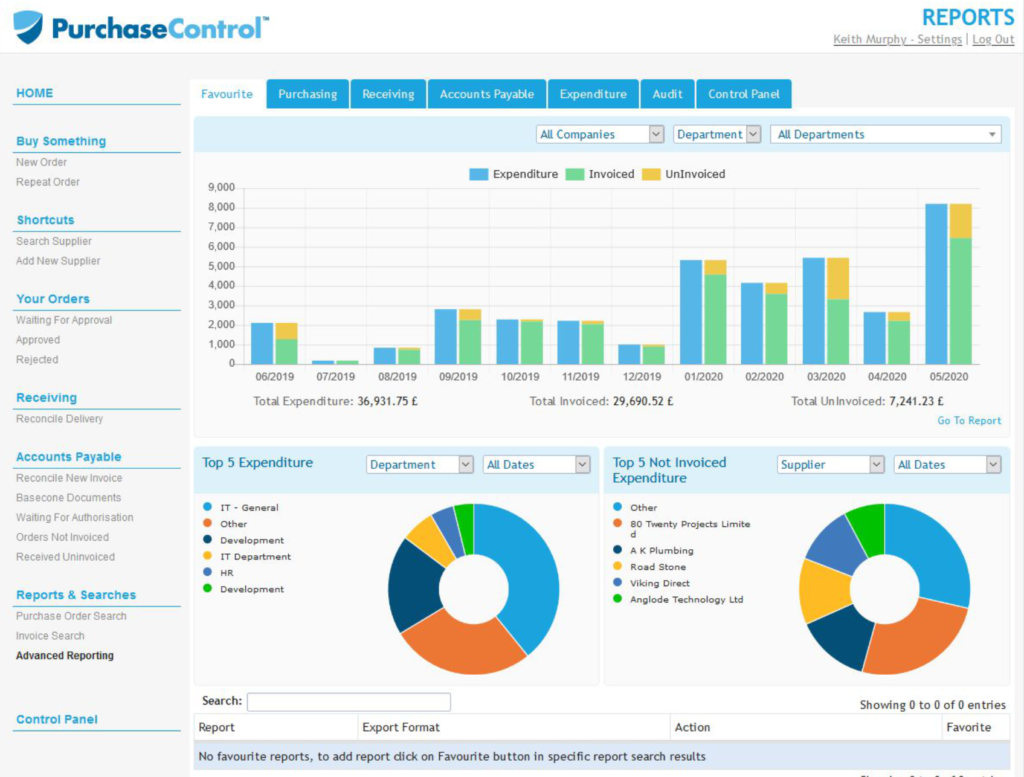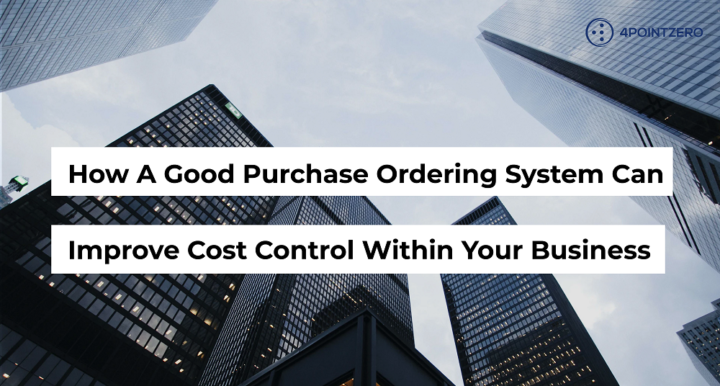For many businesses, managing costs is high on the priority list, especially in the current economic climate. Establishing efficient and reliable cost control procedures can reduce costly errors and ensure you have a real grip on expenditure across your entire business. Digital purchase ordering systems are a great way of not only gaining control of your spending but can also be a real time-saver for your staff members. By improving the purchasing abilities of your business through digitisation and automation, you will have better approval processes, less manual data entry and real-time budgeting controls, resulting in a much more efficient procurement process overall.

Below, we discuss what are benefits of a purchase order system in your business:
1. Time saved
One of the main benefits of implementing a good PO ordering system will be the time saved on data entry. Using a cloud-based system means that multiple staff members can access the same system/database and real-time information, allowing the whole team to work together on the purchasing process with no duplication of work. With system functionality such as pre-populated item catalogues for suppliers, automatic repeat orders and pre-filled order forms, it allows for quick and easy purchase order creation. Another simple tool that encourages better communication and therefore helps save time is the ability to add supporting documents as well as internal and supplier notes to your purchase orders that can be viewed by multiple employees whenever they need to, so that everyone is kept in the loop.
2. Better control over ordering
A good purchase ordering system will allow for better controls over business expenditure, whether this is by restricting user access, setting authorisation rules or allocating spending limits. These all lead to better visibility and control. It can also be beneficial to split out your spending and adapt procedures across various departments/sites meaning that area managers can take ownership of their own area’s budget and spending as their performance may largely be assessed against these metrics. An automated purchase order system
will allow you to set up automatic workflows to ensure that POs which meet certain criteria or thresholds are directed to the right person in the business to review and authorise. Below are some additional controls that can be set in place in your PO system:
· Monthly expenditure approval limits
· Departmental budgets
· Approval rules & workflows
· Restricted user access: Only has access to certain suppliers, catalogue items, departments etc.
· Full Audit trails maintained on all POs
3. Easy reconciliations and management of orders
Implementing a cloud-based PO system should make the tracking and reconciliation of orders a lot more manageable, meaning that there is less chance of orders being missed or duplicated. Being able to easily review a real-time list of ‘open orders’ in one place means that overdue deliveries can be located and action taken. When a delivery has been received, it is effortless to find the original PO and tick off items that have been received. You should also have the ability to part-receive items if the order has not yet been fully delivered, meaning that yourself or a colleague can tick off the next delivery to complete that order. Some more advanced PO systems will also have a dedicated email address that suppliers can send their invoices directly to – this subsequently uploads the invoices onto your system and will automatically assign this to the matching PO. The system can automatically check for discrepancies between the PO and invoice totals, with some systems even allowing you to set a % tolerance.

4. Direct integrations with your Accounting system
The market-leading PO systems will offer API integrations with your finance system – this means there will be a seamless data feed between your applications. An efficient PO system will search for updated information from your finance software and update the information within the PO system to match any new records or changes – this can include new suppliers and new tracking categories meaning there will be no duplication of work. When you have received your invoice, you will be able to review this in the PO system and subsequently use this to automatically create a purchase transaction within your accounting system. This ensures you maintain a high level of integrity within your records and reduces any reconciliation issues. More intelligent systems also have the ability to set up posting rules so the nominal expenditure codes and departments are automatically assigned depending on the item or supplier selected and will just need to be reviewed before they are posted into the accounts. The subsequent transaction will maintain the invoice image as well so it can always be referred back to if needed.
5. Reporting and visibility of expenditure
Alongside better control of expenditure, a reliable PO system makes cost planning a much more effortless task. Within PO systems, you will be able to set up company-wide budgets as well as sub-budgets for different sectors, departments, or areas. Having these budgets in place will allow you to review useful reports which show the expenditure vs. budget in real-time and help you to understand where you might be under/over budget in the business. Reporting can be viewed per company, supplier or department and with customisable user rights, you can ensure that managers can only review the expenditure for the area of the business that they are responsible for. As the reports are built within the system, they will provide you with accurate, real-time information which you are also able to drill down into if you want to view the individual POs driving those totals.

To summarise…
Establishing solid cost controls within your business can lead to improved profit margins and ensures you are operating as efficiently and accurately as possible. Implementing systems to help you achieve this is essential so as to ensure you are in a solid position as the markets recover. An effective purchase ordering system can provide you with full visibility and control of your business expenditure, effective ordering workflows and the opportunity to budget more accurately in order to better plan for the future.
If you would like more information on the Purchase ordering systems and implementation, please contact us at 4Pointzero www.4pointzero.co.uk
Frequently Asked Questions (FAQ)
Why is a purchase order system important for businesses?
A purchase order system is crucial for businesses as it helps maintain organized purchasing operations. It improves accuracy, reduces errors, enhances communication with suppliers, enforces budget controls, and provides an audit trail for financial and regulatory purposes.
How does a purchase order system work?
A purchase order system works by allowing authorized personnel to create purchase orders electronically. These orders are then sent to suppliers for confirmation. Upon approval, the system tracks the order’s status, delivery, and invoicing, ensuring a transparent and accountable procurement process.
What are the key features to look for in a purchase order system?
When selecting a purchase order system, consider features such as user-friendly interface, integration with accounting software, customizable approval workflows, real-time tracking, reporting capabilities, supplier management tools, and mobile accessibility.
How does a purchase order system enhance efficiency?
A purchase order system enhances efficiency by automating manual tasks, reducing paperwork, minimizing data entry errors, enabling faster approval cycles, and providing insights into purchasing patterns. This leads to time and cost savings in the procurement process.
What security measures are implemented in purchase order systems?
Purchase order systems incorporate security measures such as user authentication, role-based access control, data encryption, secure cloud storage, and regular software updates to ensure the confidentiality and integrity of sensitive procurement information.
How can a purchase order system help with financial management?
A purchase order system aids in financial management by providing insights into spending patterns, allowing budget tracking, preventing unauthorized purchases, facilitating accurate accruals, and simplifying the reconciliation of invoices with purchase orders.



